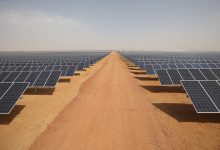Queensland’s state energy minister Mick de Brenni says the government’s decision to fast track its switch to renewables and end coal generation in little more than a decade has been driven by climate impacts, and the wishes of its big customers who wanted out of coal.
In an interview with RenewEconomy’s weekly Energy Insiders podcast, de Brenni says it was clear that the customers of the state-owned utilities that dominate the local grid were demanding a shift to low emissions power supplies.
“We have seen the customers of our government owned corporations and big generators that have been primarily relying on coal fired generation, demanding low emissions, electricity,” de Brenni said.
That much has been made clear by the decision of the state’s two biggest electricity consumers – Rio Tinto’s Boyne Island smelter and Korea Zinc’s Sun Metals zinc refinery to commit to 100 per cent renewables by the end of the decade – decisions that will each require multiple gigawatts of new wind and solar.
Climate impacts and zero emissions targets
That, and the multiple climate impacts, including unprecedented floods and “fire storms” drove the decision to plot a path to 80 per cent renewables by 2035, by which time the entire coal fleet in the country’s most heavily coal dependent grid will be closed down.
“Clearly, citizens of this nation …. know that we must take action on climate, they know that we’ve got to do something about the cost of living, and clearly, the pathway to more affordable electricity is through more renewables,” de Brenni said.
“People care, Australians care about protecting each other. And this plan really takes action on all three of those values.”
The Queensland government says the massive $62 billion investment, including in 22GW of new wind and solar, 9GW of battery storage, the world’s biggest pumped hydro project, and a new “super-grid” will slash the cost of wholesale electricity down to around $56/MWh, a fraction of where it is now.
Infrastructure and logistics challenges
But he acknowledged the challenge of having to accelerate the roll out of massive new renewable and infrastructure projects given the shortage of qualified people, the logistics challenges, and the supply constraints.
The Queensland plan involves a four-fold increase in the rollout of renewables across the next 13 years – compared to what it has delivered in the last seven years.
The plan is back-ended for an accelerated rollout in the later years, with only 4GW of new wind and solar completed between 2024 and 2029, and another 15GW in the next six years.
De Brenni says he is working with NSW energy minister Matt Kean and federal energy minister Chris Bowen to work out ways to boost local manufacturing of solar modules, wind towers and blades.
De Brenni says wind turbine manufacturers have wanted to see a market of at least 5GW to justify local manufacturing. “Well, we have got plans for at least twice that,” he said.
One of the big themes of the Queensland government is to use the switch to renewables to unlock vast mining projects – many of which will deliver the minerals needed. There are also huge prospects for the green hydrogen industry, and the encouragement of so called “flow batteries” which can use minerals found in the state.
State owned utilities will fund most of cost of transition
De Brenni says he expects private investors will stump up around one quarter of the $62 billion needed for the energy plan – although Energy Insiders co-host and ITK principal David Leitch believes the cost will be well above that.
“Public ownership is a really key factor,” de Brenni says. “For Queensland, as as you all know, it’s what’s allowed us to return dividends from our government owned corporations back to citizens, most recently with a $175 cost of living rebate.
“But it’s also what allows us to take a really orderly approach to this transition, it’s also helped us define the value of the super grid and put those cost estimations around it.
“And so we’ve been working on for the last 12 months with technical experts from with inside those government owned corporations as well as independent entities.
“We’re pretty confident in those costings in terms of what government will build, own and operate. So we’ll be entirely responsible for the financing of that our transmission system will be remain entirely publicly owned. And so that will be funded in the ordinary way that transmission projects are.”
To hear the interview on the Energy Insiders podcast please click here.











